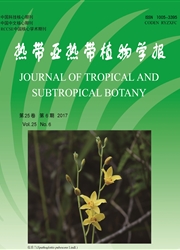

 中文摘要:
中文摘要:
锥状斯氏藻(scrippsiella frochoidea)是南海大亚湾海域优势甲藻。为了解该藻孢囊形成和萌发动态及其对营养细胞种群动态的影响,2001年1月-2002年1月在大亚湾澳头海域用沉积物捕捉器及TFO重力采泥器对其孢囊进行每月一次的周年监测,同时对浮游植物、水温、盐度、溶解氧等也进行了监测。孢囊形成和萌发分别以沉积物捕捉器中的孢囊形成率以及上表层沉积物中空孢囊的百分比来表示。钙质孢囊和非钙质孢囊年平均形成率分别为1.11×10^4cysts m^-2d^-1和2.13×10^5cysts m^-2d^-1。前者在冬季大量形成,而后者在夏季形成较多。孢囊多在春秋季节萌发,夏季萌发较少,而冬季几乎不萌发。在5月份和10月份营养细胞数量峰形成前,孢囊的萌发出现了高峰,而表层沉积物中的孢囊数量及孢囊形成率则在营养细胞数量峰后大幅度上升。由此可见,大亚湾沉积物中该藻孢囊的萌发给水体提供了丰富的营养细胞,反之水体中高密度营养细胞又促使孢囊的大量形成,从而造成了锥状斯氏藻赤潮在大亚湾海域接连发生。
 英文摘要:
英文摘要:
The formation and germination of cysts of the bloom causative dinoflagellate Scrippsiella trochoidea were studied from January 2001 to January 2002 in Daya Bay, South China Sea, as well as the dynamic of S. trochoidea vegetative population. Cysts were monthly collected by sediment traps and TFO gravity corer. S. trochoidea vegetative cells, water temperature, salinity, dissolved oxygen were measured throughout the annual cycle. In situ formation and germination of the cysts were assessed by cyst flux settled in sediment traps and the fraction of empty cysts in surface sediments, respectively. The annual average fluxes of calcified cyst and noncalcified cyst were 1.11 ×10^4 cysts m^-2d^-1 and 2.13× 10^5 cysts m^-2d^-1, respectively. Calcified cysts largely formed in winter, while non-calcified cysts did in summer. Excystment occurred often in spring and autumn, less in summer, and seldom in winter. The highest proportions of empty cysts in May and October were followed by the peak abundance of vegetative cells, after which cyst concentrations in surface sediments and cyst fluxes increased rapidly. It is suggested that cyst germination inoculates sufficient vegetative cells into the water column and high cell densities contribute to the formation of cyst, which led to the next onset of algal bloom.
 同期刊论文项目
同期刊论文项目
 同项目期刊论文
同项目期刊论文
 期刊信息
期刊信息
